A big blustery day in wind power
- Published
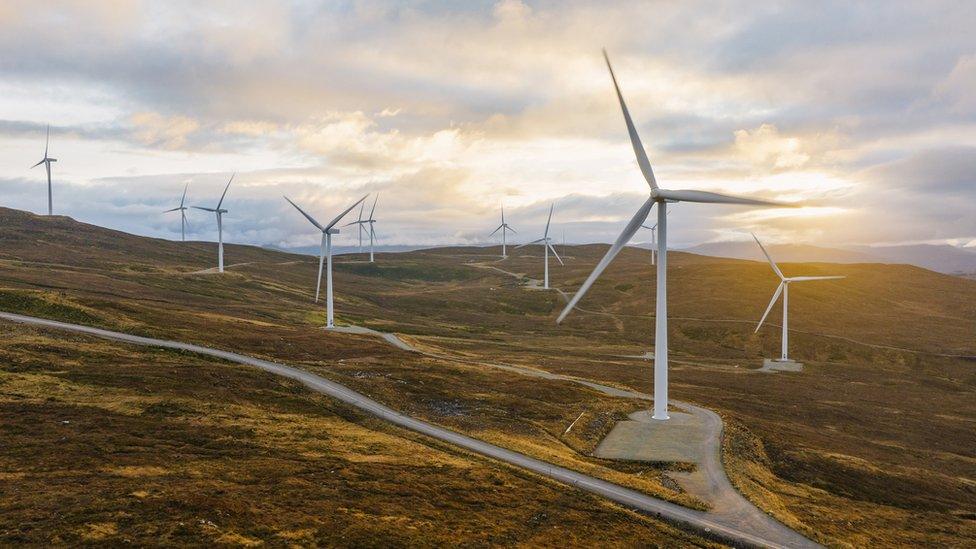
The "green freeport" being planned for the Highlands is forecast to bring 10,000 jobs and 6,000 further afield, with £3.5bn investment over 25 years, while creating a large training fund. Making it happen is on a tight timetable ahead of next year's Westminster election.
The outline plan was published on the same day the vast ScotWind project passed an important milestone. The West of Orkney Wind Farm is a reminder of how big and complex it is to put hundreds of turbines around Scotland's coast, also under a tight timetable and with rising costs.
While taxes and costs have risen, there's still an appetite to invest: a Canadian firm is spending around £800m to buy one of the bigger onshore wind developers in Scotland.
On a blustery day here in the Highlands, there are several reminders that Scotland is already on a wind-powered boom and it's about to get much bigger.
ScotWind is the name. Going offshore is the game.
The key moment was January of last year, when Crown Estate Scotland announced the winning bidders for sea areas being auctioned off.
For £750m bid (which went to the Scottish government), companies won the right to develop, and on a scale far in excess of anything the auctioneers had expected - the capacity could be close to 28 gigawatts, which is more than five times Scotland's needs, at least when the wind blows.
Winning that auction was the start of a tough obstacle course towards putting turbines in the sea and plugging them into the grid, which is all supposed to be happening within 10 years of the announcement.
Twenty months later, the first of them has reached an important milestone - submitting an application for consent from the Scottish government.
Ministers won't take much persuading, but their officials will. The process has a lot of rigour to the analysis of wildlife impact and how the plans fit with other users of the sea.
Planners for hire
The consortium behind the West of Orkney Wind Farm, starting 20 miles west of Orkney and 15 miles north of the Sutherland coast, say its people have been working to explain their plans to those most closely affected. Technical analyses have been drawn up. Some 30 contractors have been working on the plan.
The intention is to locate 125 turbines on fixed foundations. Other ScotWind sites - around two-thirds of its capacity - will have floating turbines.
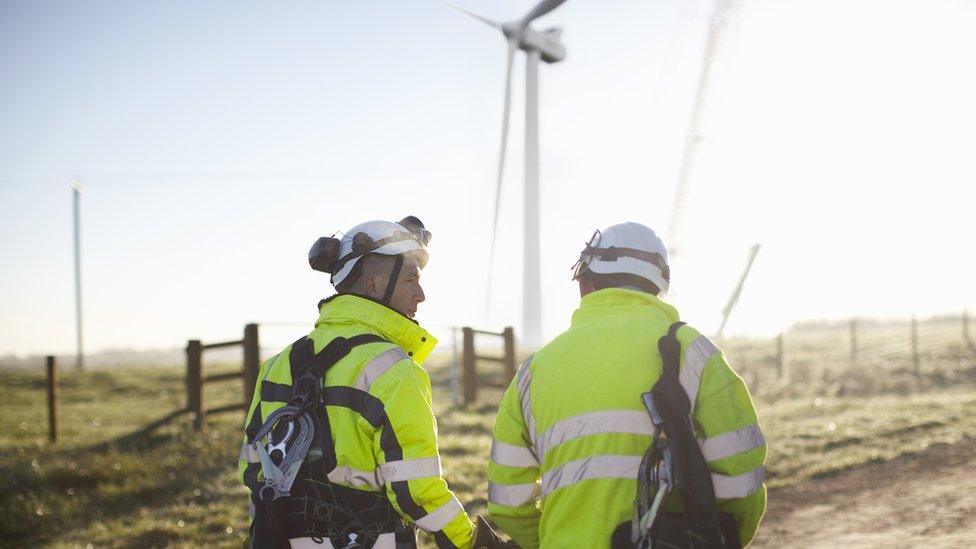
At full stretch, West of Orkney Wind Farm could deliver 2 gigawatts of power, capable of powering two million homes. And that's less than a tenth of ScotWind.
The scale of this is staggering, and challenging. Some of that power can be used close to the wind farm, with plans to make hydrogen from electrolysed water on Orkney. But much of it will be needed where people live and businesses need power. That means cables and pylons, opposition from some of those affected and further planning delays.
Trade body Scottish Renewables is, predictably, pleased to see this milestone passed. But it warns of one of the obstacles that West of Orkney and others in ScotWind now face. There's a lack of people with the know-how to handle planning applications like this.
Member firms of Scottish Renewables are partly to blame. They've been recruiting many of the best planners. There's a real skill shortage, with a lot of work to be done.
The consortium behind West of Orkney include Corio, a wind power-focused subsidiary of Macquarie, a vast Australian asset manager: TotalEnergies, a global energy firm with a big French government stake, drilling for oil and gas as well as investing in renewable power: and the Renewable Infrastructure Development Group, which brings expertise in the consenting process, which for now matters more than amassing the funds.
Power profits
What they're not saying is how much they think this will cost. Wind power has plummeted in price in recent years, but it's bounced upwards again.
Vattenfall cancelled a big North Sea project because of spiralling costs. When the UK government auctioned for guaranteed access to the grid with a floor price, its floor was too low. Developers don't think they can meet that expectation, and no-one bid.
Meanwhile, a very large onshore wind project near the Dumfriesshire village of Sanquhar has been halted, also due to rising costs of equipment and finance, and the UK governments tax on profitable power production.
That has not deterred Brookfield, which joined the wind power party on Tuesday, with a deal to buy a large slice of the onshore renewables industry.
Banks Group, a family firm based in Durham, which grew out of coal mining, is a big developer of onshore wind in Scotland and the north of England. With much of its wind power operation run from Hamilton in Lanarkshire, it has lots more in the development pipeline, including solar power and battery storage.
It is reported to have secured nearly US$1 billion (around £800m) from Toronto-based Brookfield asset management for its renewables division. Clearly, turbulent market conditions aren't putting everyone off.
Quay to success
And in a third development on a busy and blustery day, there was a different milestone passed in Inverness. Highland Council met to consider the outline business case for the Inverness and Cromarty Firth Green Freeport (ICFGF).
It was one of two Scottish bidders, along with a cluster of industrial sites on the banks of the Firth of Forth, to win the competition, jointly run by the UK and Scottish government, to have the status of a freeport. That's a cluster of areas designated for tax breaks to stimulate investment and job-creation.
In Scotland, they're labelled "green" to signal the intention of making this about low-carbon business.
For the east of Scotland, that now means ScotWind. There is a need for a lot of quayside capacity to handle incoming equipment, much of it manufactured far overseas. Some may be manufactured on these sites, if the tax breaks and commercial prospects stand up, and if the infrastructure and orders can be sequenced.
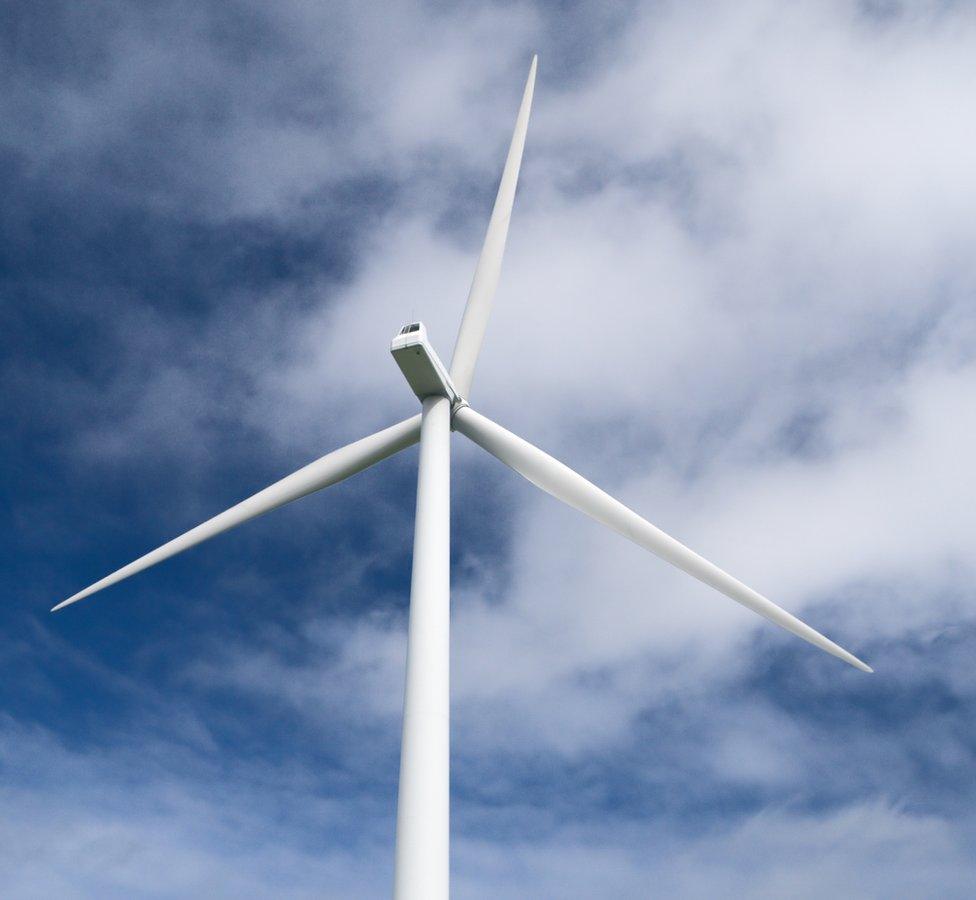
Those vast offshore wind projects are then supplied from coastal yards on the Cromarty Firth as well as from Inverness docks.
The pitch is now to include the former fabrication yard at Ardersier, to the west of the Highland capital, 370 acres/150 hectares of it, as well as Deephaven, a docking facility near Invergordon on the Cromarty Firth, where oil rigs are currently serviced. In total: nearly 1300 acres/530 hectares.
Those are included in the outline business case. And what a case it is. It's only forecast now, and such forecasts are probably best served with a pinch of salt.
That said, the target is more than 10,000 local jobs created, including supply chains, with 6,000 further jobs further down the supply chain and further afield. That's over 25 years, with an intention to attract £3.5bn of investment.
Kerching, say the area's landowners. A special meeting of Highland Council was told there are some very sensitive commercial discussions going on, between developers, landowners and tax authorities.
One achievement of freeports is to push up land valuations, and the Scottish government turned down proposed legislation that would have captured at least some of that for the public purse.
Heat is on
Among the tax breaks is a reduction in National Insurance contributions. Unlike other freeports, the Highland outline plan wants to retain those contributions, and ring-fence them for a training fund.
The area is reckoned to be losing 2,500 young people each year, as demographics swings to older age groups.
Retaining young people with attractive, skilled jobs is one of the key goals of the freeport plan. And potential inward investors to the freeport are asking where their recruits are going to come from.
Calum MacPherson, two months into the job of ICFGF chief executive, warned the special meeting of Highland councillors there's a tight timetable for this.
Rivals are eager to get inward investment - in the UK and overseas. He cited Canada and Norway as joining the American-led race to attract green energy investment by introducing new tax incentives.
If the Highland bid doesn't finalise its business case with the Treasury early next year, and that process is not expected to be easy, they may come up against an electoral timetable that could block progress.
He did not have to spell it out: an incoming Labour government is not expected to be a big supporter of freeports. It has criticised the damage they could do to European trade.
There is research evidence of freeports merely displacing activity rather than creating new jobs. Sir Keir Starmer has said they are "not a silver bullet". His shadow cabinet has its own ideas on how to use tight tax revenues.
So the heat is on to seal the deal ahead of the Westminster election.
- Published4 October 2023
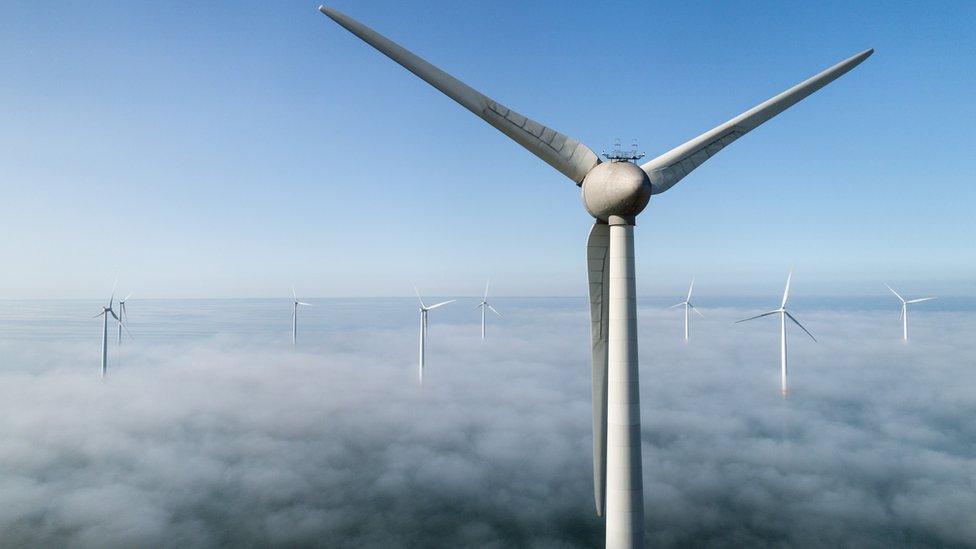
- Published28 September 2023
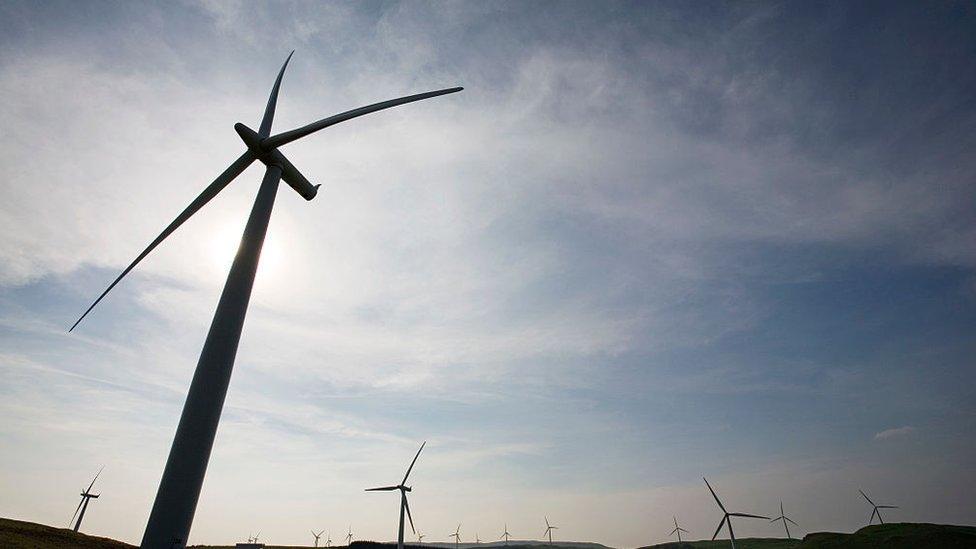
- Published12 September 2023
- Published31 July 2023
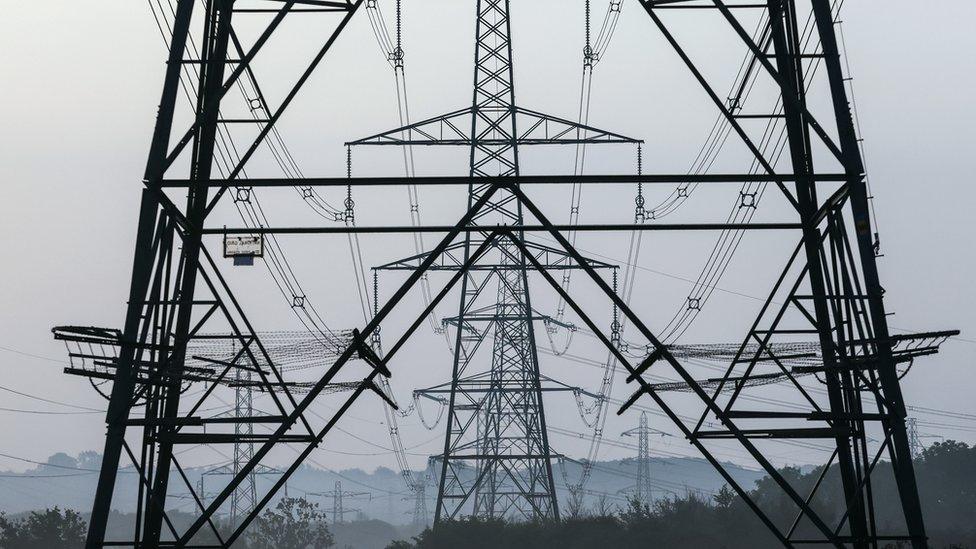
- Published18 January 2022
